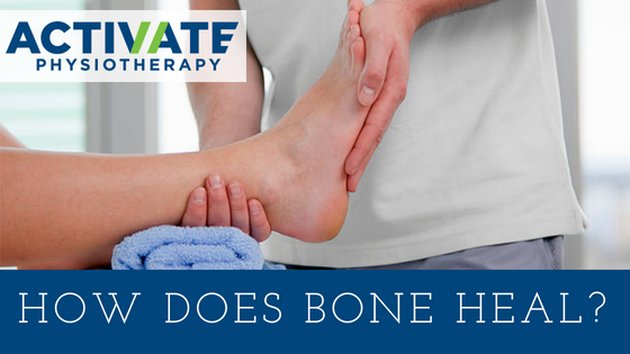From the moment a bone breaks or fractures the healing process begins. Bone healing can be broken down into 3 phases: The Inflammatory Phase, The Reparative Phase and The Remodelling Phase. When everything goes to plan most bones heal in 4-8weeks. Let’s take a look at each of these a little more closely
Inflammatory phase (duration: hours–days):
- Your bone contains blood vessels so when it breaks, it causes these blood vessels to tear. In the same way that a muscle or ligament tear happens a bruise, called a haematoma forms.
- The bleeding that occurs when the bone breaks also brings a soup of inflammatory cells to the area. This soup is responsible for the swelling that appears quickly after a bone is broken. This is an important part to the start of the healing process.
- After a couple of days the haematoma is infiltrated by fibrous tissue, which forms a scaffold or matrix for the new bone to form onto. This is called the “primary callus”

Reparative phase (duration: days-weeks):
- Over the next few days and weeks the primary callus continues to develop until a soft callus forms around the haematoma. This is a bit like the scab that forms over a graze or cut on the skin.
- During the rest of the reparative phase the soft callus is continually remodelled and begins to harden. This process occurs over several weeks. This is still softer than normal bone but is able to withstand external forces. At this point your clinician will likely get you to have another x-ray or scan to determine that “clinical union” of the bone has occurred and you will be able to have your walker boot, Exos or polyester cast or splint removed.
- Your x-ray may still look like there is a thickened or bulged part around where the fracture was.
- You still need to take care with contact sports or those where you may fall heavily onto the affected area like gymnastics so additional time may be required to make sure the callus is hard enough to withstand these forces.
Remodelling phase (duration: months-years):
- Remodelling is the longest phase and may continue for several years after a fracture.
- During this phase the external forces, functional demands and growth of the bone will continue to stimulate the callus to remodel to make it stronger and as much like the original bone as possible.
- When the callus is no longer needed the excess bone is reabsorbed and the bone becomes smooth and almost invisible on x-ray.

